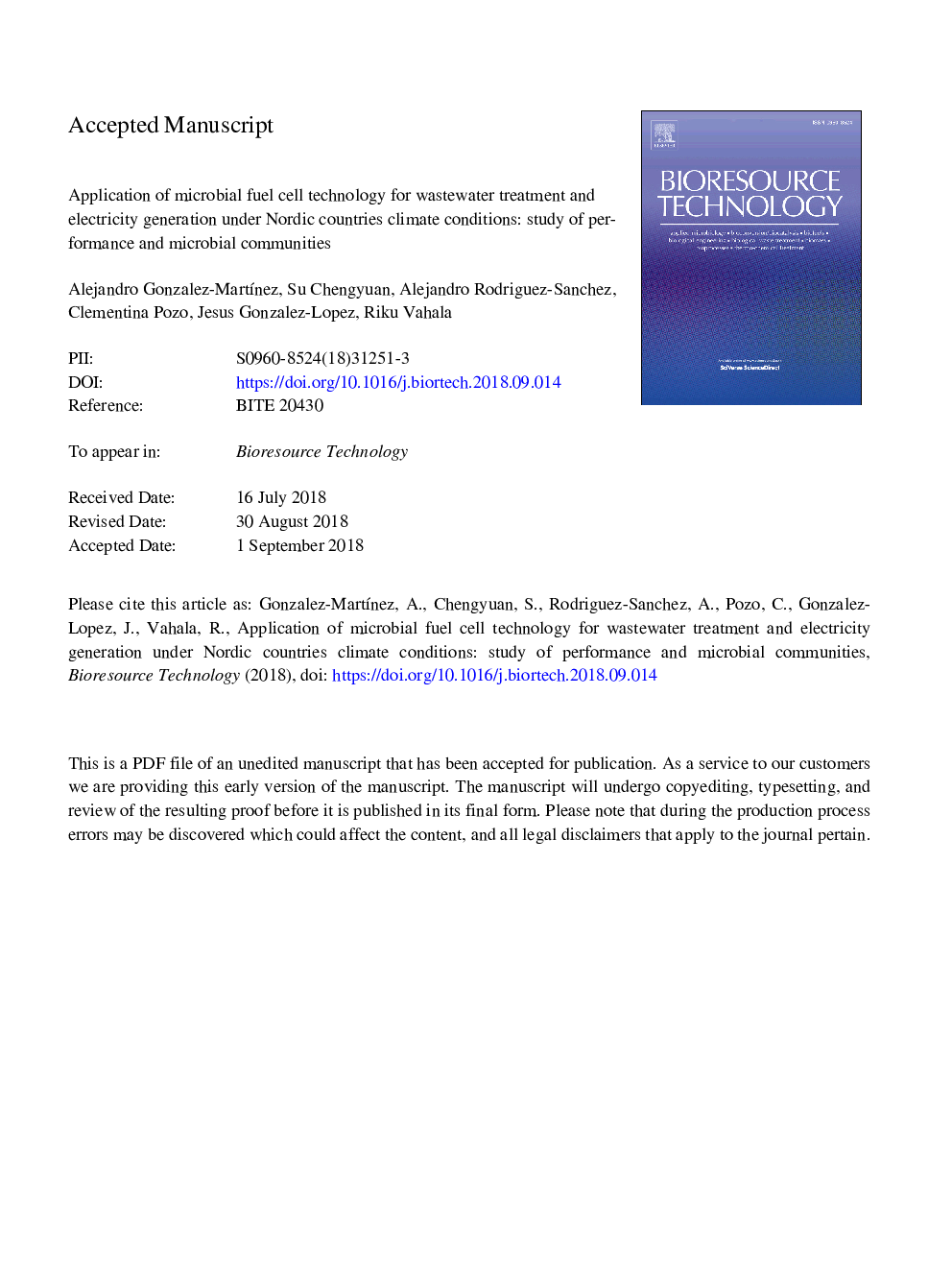| Article ID | Journal | Published Year | Pages | File Type |
|---|---|---|---|---|
| 8960327 | Bioresource Technology | 2018 | 36 Pages |
Abstract
Two microbial fuel cells were inoculated with activated sludge from Finland and operated under moderate (25â¯Â°C) and low (8â¯Â°C) temperatures. Operation under real urban wastewater showed similarities in chemical oxygen demand removal and voltage generated, although moderate temperature supported higher ammonium oxidation. Fungi disappeared in the microbial fuel cell operated at temperature of 25â¯Â°C. Archaea domain was dominated by methanogenic archaea at both temperature scenarios. Important differences were observed in bacterial communities between both temperatures, however generating similar voltage. The results supported that the implementation of microbial fuel cells in Nordic countries operating under real conditions could be successful, as well as suggested the flexibility of cold-adapted inoculum for starting-up microbial fuel cells, regardless of the operating temperature of the system, obtaining higher COD removal and voltage generation performances at low temperature than at moderate temperature.
Keywords
Related Topics
Physical Sciences and Engineering
Chemical Engineering
Process Chemistry and Technology
Authors
Alejandro Gonzalez-MartÃnez, Su Chengyuan, Alejandro Rodriguez-Sanchez, Clementina Pozo, Jesus Gonzalez-Lopez, Riku Vahala,
